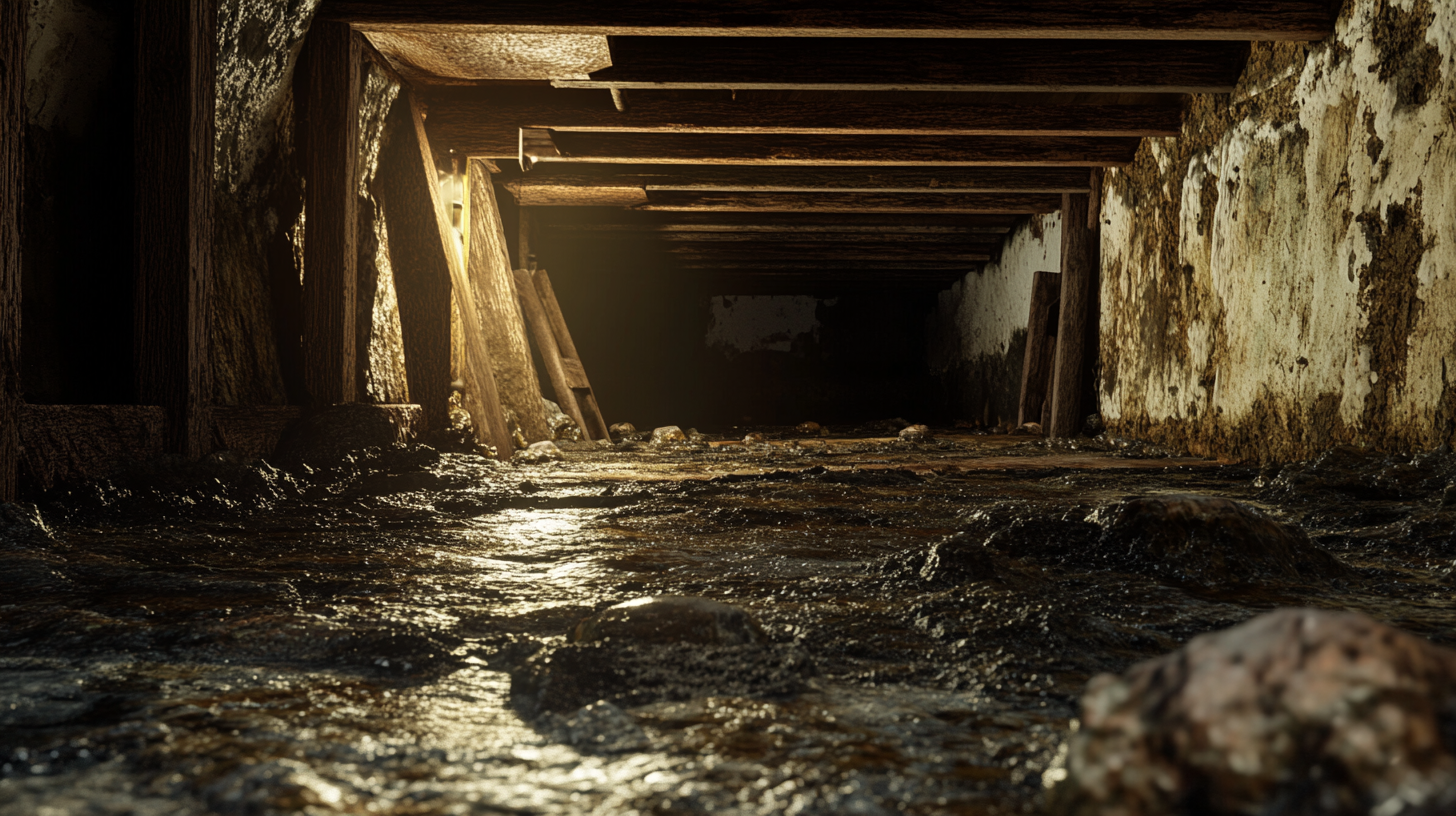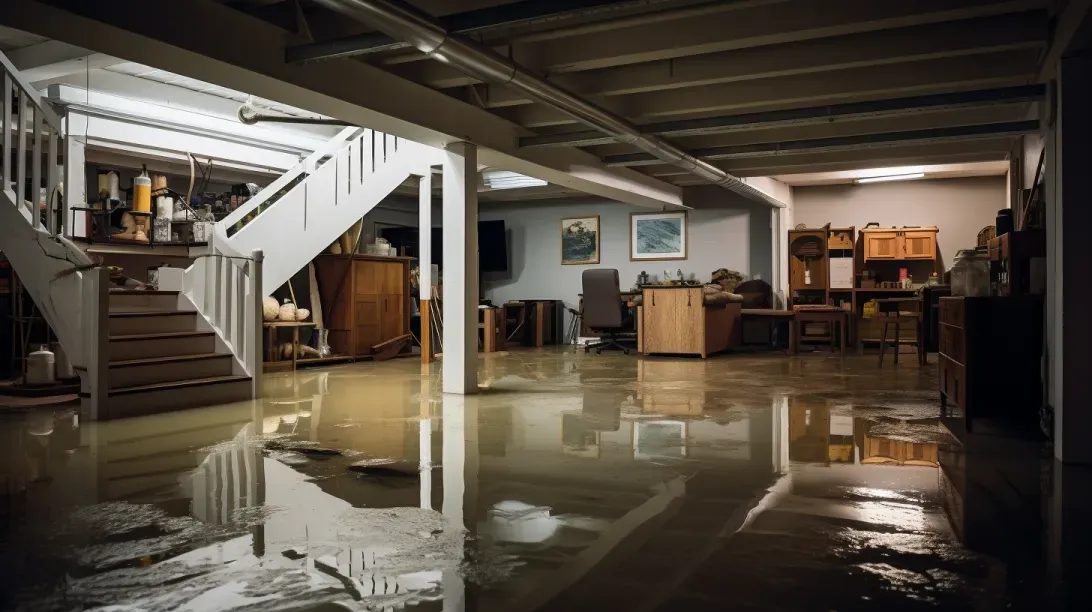Now IS THe Time To...

Crawl Space Services In Knoxville, TN
Stetson Howard: 865-432-6743
CRAWL SPACE ENCAPSULATION, REPAIR, WATERPROOFING & MOLD REMOVAL
No-Obligation, Free Inspections
No-Obligation Free Estimates
We Warranty All of Our Work
100% Satisfaction Guaranteed
Welcome to our comprehensive exploration of the vital role that proper waterproofing plays in the maintenance of buildings. This blog is dedicated to unraveling the significance of waterproofing as a key element in preserving the structural integrity and longevity of buildings, and the potential consequences of getting it wrong.
Safeguarding Structures: The Imperative of Effective Waterproofing
Waterproofing is more than just a preventive measure; it is an essential shield that protects buildings from the damaging effects of water and moisture. In this blog, we delve into why waterproofing should be a cornerstone in any building maintenance strategy and how it contributes to the overall health and durability of a structure.
Navigating the Risks of Inadequate Waterproofing
The Hidden Dangers of Water Damage: Water, often perceived as a benign element, can be a silent destroyer when it comes to buildings. Inadequate waterproofing can lead to a host of problems, ranging from cosmetic issues to severe structural damage.
Consequences of Incorrect Waterproofing: Incorrect or inadequate waterproofing can result in costly repairs and maintenance issues. These include mold growth, which poses health risks; deterioration of building materials; and in severe cases, foundational damage that compromises the building's safety and stability.
In this blog, we will explore the various facets of waterproofing, from its importance in building maintenance to the consequences of incorrect or inadequate waterproofing practices. We aim to provide insights into effective waterproofing strategies, the latest materials and technologies in the field, and the best practices for ensuring that your building remains dry, safe, and structurally sound.
Join us as we navigate the often-overlooked yet crucial world of waterproofing, highlighting its importance in maintaining the health and longevity of buildings.
Overlooking Preliminary Assessments
In the process of waterproofing a building, preliminary assessments play a crucial role. Skipping these initial steps can lead to significant issues down the line. This section will discuss the risks associated with overlooking detailed inspections and the importance of addressing existing moisture issues before proceeding with waterproofing.
Skipping Detailed Inspections
The Risks of Not Conducting Thorough Pre-Waterproofing Inspections
- Failing to conduct a thorough inspection before waterproofing can lead to overlooking critical flaws in a building’s structure. These flaws, if not addressed, can compromise the effectiveness of the waterproofing process. For instance, cracks or structural damage that are not repaired can lead to water seepage, even with new waterproofing.
- A detailed inspection helps in identifying the specific needs of a building, allowing for a tailored waterproofing approach. This includes understanding the building’s construction, existing drainage systems, and areas particularly susceptible to water damage.
How to Properly Assess a Building for Waterproofing Needs
- A proper assessment should include a visual inspection of both the interior and exterior of the building. Look for signs of existing water damage, such as mold, dampness, or staining.
- It’s also important to assess the environmental factors surrounding the building, such as its exposure to rain, the local water table, and any history of flooding. This information can guide the selection of appropriate waterproofing materials and methods.
Ignoring Existing Moisture Issues
The Consequences of Waterproofing Over Existing Moisture Problems
- Waterproofing over existing moisture issues can lead to further damage. Trapped moisture can continue to cause deterioration within the structure, such as rot in wooden elements or corrosion in metal components.
- Additionally, covering up moisture problems without resolving them can create conditions conducive to mold growth, posing health risks to occupants and further compromising the building’s integrity.
Steps to Address Moisture Issues Before Waterproofing
Before proceeding with waterproofing, it’s essential to address any underlying moisture issues. This may involve repairing leaks, improving drainage around the building, or installing dehumidifying systems to manage internal moisture levels.
In cases of significant water damage, it may be necessary to replace affected materials, such as insulation or drywall, to ensure that the building is thoroughly dry and free from mold before waterproofing is applied.
Inadequate Surface Preparation
Proper surface preparation is a critical step in the waterproofing process. Neglecting this phase can lead to ineffective waterproofing, resulting in potential water damage and costly repairs. This section will discuss the importance of thorough surface cleaning and priming, as well as the consequences of failing to repair existing damage before waterproofing.
Importance of Surface Cleaning and Priming
Common Errors in Preparing Surfaces for Waterproofing
- One of the most common errors in surface preparation is not thoroughly cleaning the area. Dirt, debris, and residues can prevent waterproofing materials from adhering correctly, leading to weak spots and potential leaks.
- Another error is applying waterproofing materials on damp or wet surfaces, which can trap moisture and lead to mold growth or material degradation.
Best Practices for Surface Preparation
- Start by thoroughly cleaning the surface. This includes removing dirt, dust, oils, and any previous coatings that may interfere with the new waterproofing application.
- Ensure the surface is completely dry before applying any waterproofing materials. Use dehumidifiers or heaters if necessary to achieve the right conditions.
- Apply a primer if required by the waterproofing material. Primers can improve adhesion and create a more uniform surface for the waterproofing application.
Failing to Repair Cracks and Damage
The Impact of Not Repairing Existing Damage Before Waterproofing
- Neglecting to repair cracks and damage before waterproofing can lead to serious structural issues. Water can seep through these imperfections, undermining the effectiveness of the waterproofing and causing further deterioration.
- Existing damage can also expand over time, especially if water infiltrates and freezes, leading to more extensive and costly repairs in the future.
Techniques for Effective Crack and Damage Repair
- For minor cracks, use a suitable filler or sealant that is compatible with both the surface material and the waterproofing system. Ensure that the filler is applied deeply into the crack and smoothed out to create a level surface.
- For more significant damage, such as large cracks or holes, more extensive repairs may be necessary. This might include patching with new material or even partial reconstruction of the damaged area.
In cases of severe structural damage, consult a professional to assess the best course of action. This ensures that repairs are done safely and effectively before any waterproofing is applied.
Choosing the Wrong Waterproofing Materials
Selecting the appropriate waterproofing materials is crucial for the longevity and effectiveness of any waterproofing project. However, choosing the wrong materials can lead to inadequate protection and increased costs over time. This section will explore how to select the right materials based on environmental conditions and the importance of balancing quality with cost.
Material Selection Based on Environment
How to Choose the Right Materials for Different Environmental Conditions
- The effectiveness of waterproofing materials largely depends on the specific environmental conditions they will face. Factors such as climate, exposure to sunlight, temperature fluctuations, and moisture levels must be considered.
- For example, in areas with high rainfall or humidity, materials with excellent water resistance and breathability are essential. In contrast, in sunnier climates, UV-resistant materials are crucial to prevent degradation over time.
Examples of Mismatches Between Materials and Conditions
- A common mismatch is using water-based sealants in areas with high moisture exposure, leading to rapid deterioration of the waterproofing layer. Similarly, using materials that are not UV-resistant in sunny climates can result in cracking and peeling.
- Another example is the use of rigid waterproofing materials in areas with significant temperature variations, which can lead to cracking as the materials expand and contract.
- Quality vs. Cost Considerations
The Pitfalls of Choosing Low-Quality Materials for Cost Savings
- Opting for lower-quality waterproofing materials to save costs can be a false economy. These materials may not provide adequate protection, leading to water damage and the need for more frequent repairs or replacements.
- Low-quality materials often have a shorter lifespan and may not adhere well to surfaces, resulting in leaks and water ingress. This can ultimately increase the overall cost of maintenance and repair.
Balancing Budget and Quality in Material Selection
- It's important to find a balance between cost and quality. Research and compare different materials to understand their pros and cons. Look for materials that offer the best combination of performance and durability within your budget.
- Consider the long-term implications of your material choice. Investing in higher-quality materials can lead to lower maintenance costs and better protection over time. It's also worth consulting with waterproofing professionals who can provide recommendations based on experience and expertise.
Incorrect Application Techniques
The success of a waterproofing project heavily depends on the correct application of materials. Incorrect application techniques can lead to failures in the waterproofing system, resulting in leaks and potential structural damage. This section will discuss common application errors and the importance of adhering to manufacturer’s instructions.
Common Application Errors
Introduction of Typical Mistakes Made During the Application Process
- One of the most common mistakes in waterproofing application is inadequate surface preparation. This includes not properly cleaning or drying the surface before application, which can prevent the waterproofing material from adhering correctly.
- Another frequent error is applying the waterproofing material too thinly or unevenly. This can lead to inadequate coverage, leaving parts of the surface vulnerable to water ingress.
- Ignoring the weather conditions during application is also a mistake. Applying waterproofing materials in conditions that are too wet, dry, hot, or cold can affect their performance.
Tips for Proper Application of Waterproofing Materials
- Ensure the surface is clean, dry, and free of debris before application. Use appropriate cleaning methods and allow sufficient drying time.
- Apply the waterproofing material evenly and according to the recommended thickness. Use tools like notched trowels or sprayers for consistent application.
- Be mindful of the weather and environmental conditions. Avoid applying materials in extreme temperatures or when rain is expected shortly after application.
Not Adhering to Manufacturer’s Instructions
The Importance of Following Manufacturer Guidelines
- Manufacturers of waterproofing materials provide specific instructions based on extensive testing and research. These guidelines are designed to ensure optimal performance and longevity of the product.
- Following these instructions is crucial for the material to function as intended. This includes adhering to recommendations on surface preparation, application thickness, curing times, and environmental conditions.
Consequences of Deviating from Recommended Application Procedures
- Deviating from the manufacturer’s instructions can lead to a range of problems. These include premature failure of the waterproofing layer, reduced effectiveness in preventing water ingress, and potential voiding of product warranties.
- In some cases, incorrect application can also lead to additional costs in repairs and reapplication. It may also result in structural damage to the building if water infiltration occurs due to inadequate waterproofing.
Neglecting Proper Drainage Solutions
Effective drainage is a cornerstone of successful waterproofing. Neglecting this aspect can severely undermine waterproofing efforts, leading to water accumulation and potential damage. This section will delve into the importance of integrating effective drainage solutions and address common drainage problems.
Importance of Drainage in Waterproofing
How Inadequate Drainage Can Undermine Waterproofing Efforts
- Inadequate drainage can lead to water pooling around the structure, which increases hydrostatic pressure on waterproofing membranes and coatings. This pressure can cause these barriers to fail, allowing water to seep into the building.
- Excess moisture due to poor drainage can also lead to mold growth, foundation damage, and can compromise the overall structural integrity of the building. It negates the effectiveness of even the most robust waterproofing systems.
Strategies for Integrating Effective Drainage Solutions
- Proper Sloping and Grading: Ensure that the ground around the building slopes away from the foundation. This natural slope helps to direct water away from the structure, reducing the risk of water damage.
- Installation of Drainage Systems: Implementing systems like French drains, footing drains, or gutter and downspout systems can significantly enhance water management. These systems should be designed to capture and redirect water efficiently away from the building.
- Regular Maintenance: Keep drainage systems clear of debris and in good repair. Regular maintenance is crucial to ensure they function effectively, especially during heavy rains.
Solutions for Common Drainage Problems
Identifying and Addressing Typical Drainage Issues in Waterproofing
- Clogged Gutters and Downspouts: Regularly clean gutters and downspouts to prevent blockages. Clogged systems can cause water to overflow and pool around the foundation, which can lead to basement flooding and foundation damage.
- Improper Sloping: If the ground around a building does not slope away, re-grading may be necessary. In some cases, installing a swale or a catch basin can help redirect water.
- Subsurface Water Issues: For problems with subsurface water, consider installing a sump pump system or an interior drainage system. These systems can help manage water that accumulates beneath the basement floor or along the foundation.
- Cracked or Damaged Drainage Pipes: Inspect underground drainage systems for cracks or damage. Repair or replace any faulty components to ensure that water is being effectively diverted away from the building.
FAQs
Recent Blog Posts
Crawl Space News







